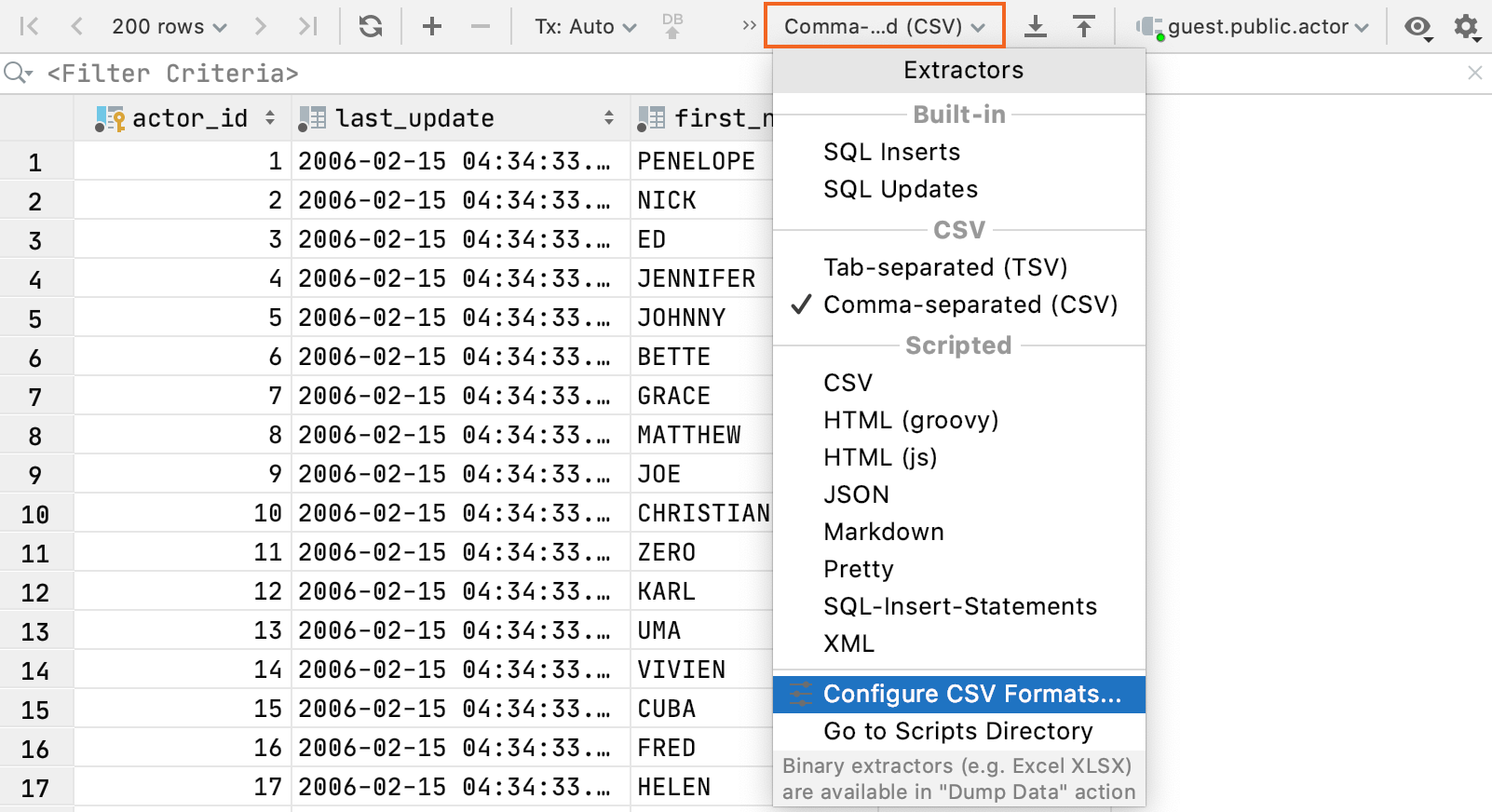
There are already some user-generated extractors on GitHub which everybody can use: It creates several lists if you’ve selected cells from several columns.

To use this type of extractor, create a new file in the scripting folder.Īnother version of this extractor from our user is here: it also adds parentheses. MySQL and PostgreSQL allow using multi-row syntax. Once the new script file is in the folder, you can use the extractor!Ĭopy these values and paste them into the query. When you create or edit Groovy scripts in IntelliJ IDEA, and have Groovy installed, coding assistance is available. JBIterable getDbChildren(Class, ObjectKind)Īdditional information about the API can be found here.

TABLE DasTable //object that represents the actual table you’re extracting data from TRANSPOSED Boolean //checks if data editor is transposed (Gear Icon → Transpose) These objects are equal when dumping the whole page to file. Note the available context bindings: COLUMNS //selected columns Here is the diff view of two scripts: the existing and our new one which we’ll name. It can be useful if you are going to paste these values into an IN operator in a WHERE clause. Let’s create an extractor which will dump your data to CSV format, but to just one row. You should edit an existing extractor or just add your own to this folder. Or you can select Go to scripts directory in the extractor menu to navigate there. Scripts are usually located in `Scratches and Consoles/Extensions/Database Tools and SQL/data/extractors`.
#DATAGRIP IMPORT CSV CREATE TABLE CODE#
It helps IntelliJ IDEA highlight your code if that’s where you create/edit your scripts. Groovy is the extension of the script itself. Looking closely at the file name, :ĬSV-Groovy is just the name of the script Ĭsv is the extension of the result file if you extract to file These scripts are written in Groovy, but they can also be written in JavaScript. Several of them are already there such as, HTML-Groove.html. Once created, it appears among the other extractors.Ĭreating any text extractor with scriptingįor the more complicated cases, consider using scripting extractors. In this dialog, in addition to changing the existing CSV and TSV extractors, you can create your own. To create your own format based on CSV (or any DSV format), select Configure CSV formats… Let’s see how we can extend the default functionality. Still, users may need to extract data in many different ways. For more details on how they work, please visit this page. Some of them let you export data as a set of INSERT/UPDATE statements, while others export data as text such as CSV, JSON, HTML, etc. There are several built-in formats as you can see.

Look to the left of the Dump data button for a drop-down where you can choose the extractor - the format to export data in.

We’ll talk about copying data to the clipboard from the data editor, but the same applies to other described ways to export data. In the toolbar of a result-set or data editor, select Dump data button → To Clipboard Default extractors Select the data you need within a result-set or data editor and click Copy or press Ctrl/Cmd+C. In the toolbar of the result-set or data editor, select Dump data button → To File… Context menu on a query and → Execute to file. Context menu on a table/view and → Dump data to file. Export directionsĪny table/view or result-set can be exported to a file or copied to the clipboard. You can even create your own export format. In DataGrip, as well as all other JetBrains IDEs that feature database support, there is a powerful engine to export data in many formats.


 0 kommentar(er)
0 kommentar(er)
